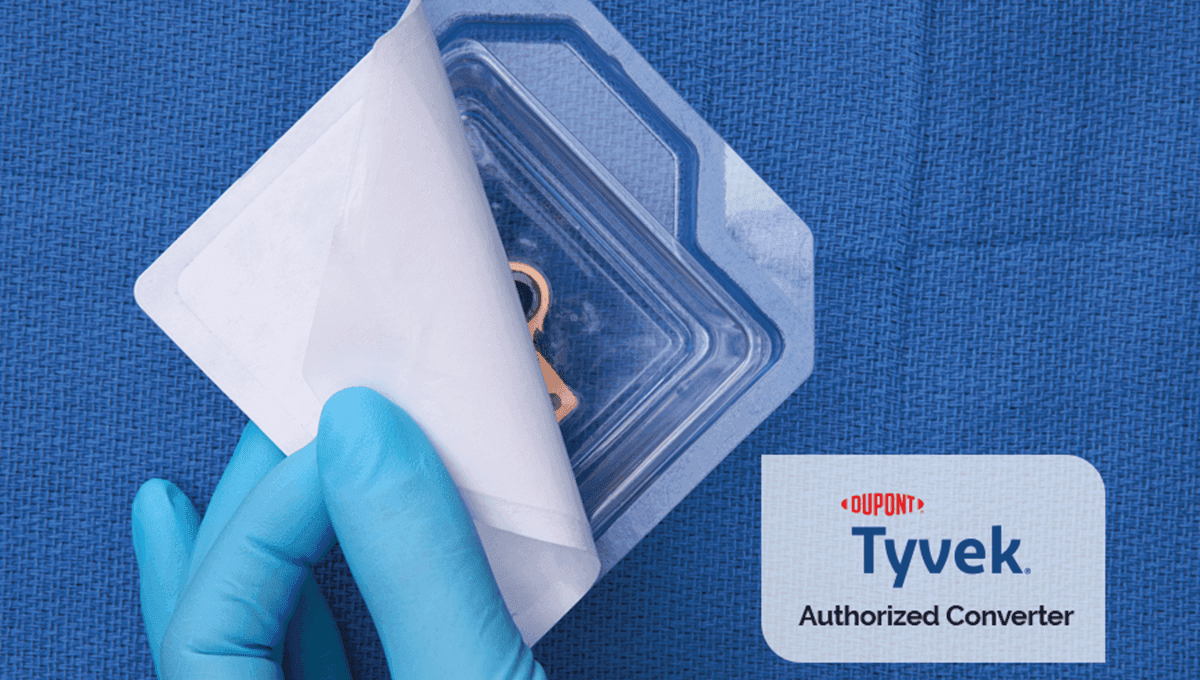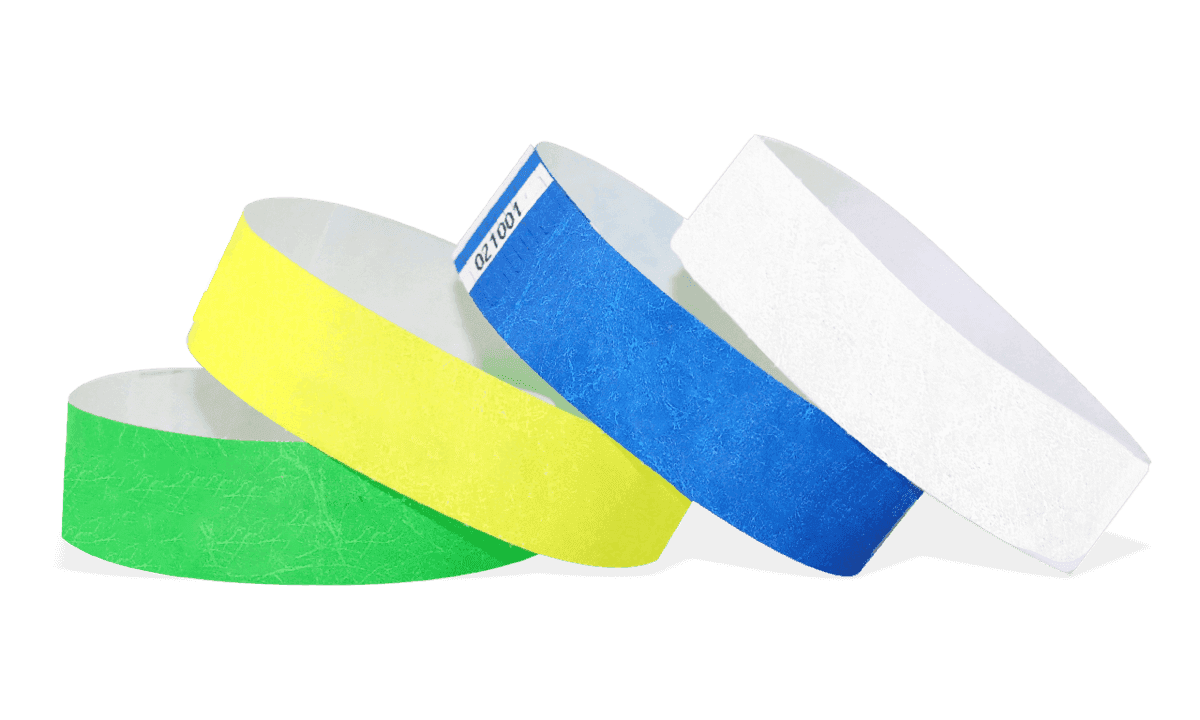Tyvek is an amazing material, and even if you are not already using it in your day-to-day work, it is more than likely that you are already familiar with it. The plastic sheets that are used to coverbuildings undergoing construction are almost always composed of Tyvek, and it is in this application that most of us are likely to have come into contact with the material.
Tyvek has a number of properties that make it superior to other similar materials. It is extremely strong, which is one reason why it has been used so extensively in the construction industry. It is also tear resistant, so that even if slightly damaged it does not fall apart. It is completely waterproof, and keeps all of its strength when wet. It is easy to sterilize, and once made into packaging is able to maintain sterile for many years.
 Building wrapped in protective Tyvek
Building wrapped in protective Tyvek
For this reason, Tyvek material has been used in a vast variety of contexts over the past 60 years.
Technical Details#
Though superficially similar to paper, Tyvek is actually a completely synthetic material. It was first developed by DuPont, and that company still owns the trade name. It was discovered in 1955, when Jim White, a researcher for DuPont, noticed polyethylene fluff emerging from a pipe in an experimental lab. He instantly recognized the potential of the material, and went on to develop Tyvek for commercial purposes. Tyvek was first trademarked shortly afterwards, in 1965, and 1967 saw the first batches available for commercial use.
Tyvek material a nonwoven, synthetic substance. At a fundamental level, it is composed of spunbound olefin fibers. These tiny fibers are 0.5 – 10 µm in diameter, some 10 times smaller than a human hair. After production of the fibers themselves, they are spun and bonded together under great heat and pressure.
No binders are used to hold the material together, so it is chemically inert. Tiny perforations remain in sheets of Tyvek, meaning that water vapour is able to permeate thin sheets of the material, but liquid water is not. Being essentially a thermoplastic, Tyvek returns to a semi-solid state when sufficient heat is applied to it, and this property can be used to bond sheets together. In addition, a variety of bonding adhesives are recommended by DuPont for use with Tyvek, including starch, dextrin, casein, and various forms of glue.
Working with Tyvek is relatively easy, because even though it offers great strength, it can be easily cut and folded. Further, once an incision is made the material naturally resists further tearing, meaning that even when slightly damaged Tyvek retains its integrity. These can be easily done using specialized Tyvek Printers like the Thermaprint 64.
Though it resembles paper, Tyvek is a plastic and cannot be recycled with paper. Some forms of Tyvek are marked with local and international recycling codes, although support for the recycling of Tyvek varies widely.
Uses and Properties#
Since is invention, Tyvek has found uses in a huge range of situations. The fact that it is much stronger than paper and many fabrics, as well as totally waterproof, has led to it being used as a replacement for these materials in many applications.
Tyvek was originally designed for the construction industry, and it is in this context that most people would’ve encountered it. Being waterproof but permeable, sheets of Tyvek are able to protect buildings from encroaching rain and damp, whilst also allowing them to breathe.
Another common use for Tyvek is in coveralls. These are all-in-one garments used to protect workers in many industries, from oil workers to auto mechanics. It can even be used in HAZMAT suits where the level of protection required is sufficiently light – whilst commonly used in asbestos and radiation work, Tyvek coveralls do not provide full HAZMAT protection.
 Application of Tyvek HAZMAT suits
Application of Tyvek HAZMAT suits
Tyvek is used extensively in medical packaging, and is replacing both paper and other forms of plastic in this application. The advantages of Tyvek over these other materials are many, but primarily based on its strength and water resistance. If produced correctly, medical packaging made from Tyvek is able to maintain sterility for many years. Especially in the developing world, where medical devices are likely to be used in challenging environments, the ability of Tyvek packaging to stay strong even when wet is prized.
Beyond these common applications, Tyvek has been used in a number of unusual contexts. Several countries, including Costa Rica, have used Tyvek to produce banknotes, feeling that these notes would last longer than their paper cousins. Similarly, New Zealand used Tyvek for its drivers’ licenses from 1986 to 1999. There have even been fashion collections made from Tyvek – back in 1976, fashion brand Fiorucci made an entire line of Tyvek clothing, and even today American Apparel offer Tyvek shorts.
 Tyvek bank note from the Isle of Man
Tyvek bank note from the Isle of Man
Printing on Tyvek#
In the vast majority of applications it is used for, Tyvek must be printed. Tyvek used in medical packaging must be printed with often minuscule details of the item contained in the package, andalso with unique barcodes for each. Even Tyvek used on construction sites is likely to have the name of a company printed onto it.
Printing is where working with Tyvek, rather than with more traditional materials such as paper or fabric, becomes a little more difficult. Most printing techniques use either liquid inks or laser-fixed toner to print with. Tyvek, being waterproof, does not absorb water-based inks, and therefore drying times for these inks on Tyvek are significantly longer than with paper substrates. Laser printing on Tyvek comes with its own problems – that the intense heat generated by lasers can melt Tyvek. For this reason, innovative techniques are required to print to on Tyvek to a sufficient speed and quality.
Thermal Transfer techniques, which use a mild application of heat to activate ink previously applied to the Tyvek substrate, are now becoming industry standard. These techniques allow for high speeds, as drying times are improved over even the most advanced ink-based techniques. In addition, the low intensity heat used in Thermal Transfer means that there is no possibility of damaging the Tyvek substrate.


